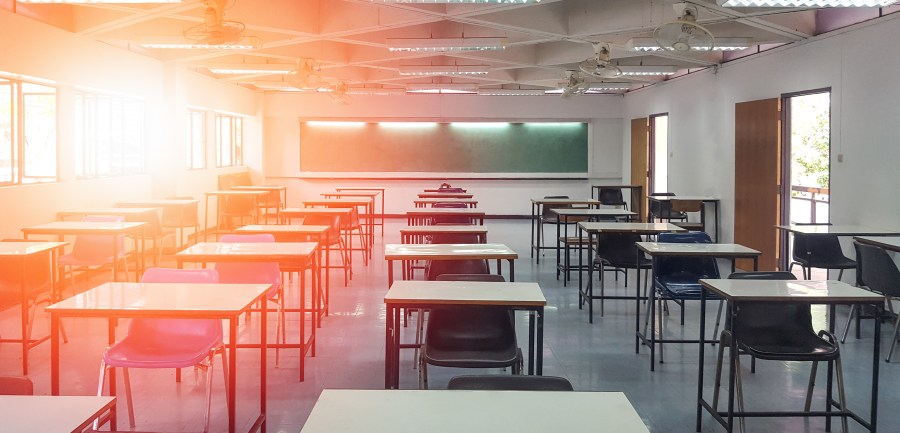(NewsNation) — For two years, school districts across America were forced to make a choice between keeping classrooms open or closing to help stop the spread of the COVID-19 virus.
Schools pivoted from in-person to virtual learning and in the process, they widened the achievement gap in districts across the country.
Quarantines, absenteeism and lost instruction time were all contributing factors in the nationwide plunge in academic levels from virtual learning during the pandemic.
“I’ve been studying education policy and looking at test scores for 25 years. I’ve never seen anything like the drop in test scores associated with the pandemic,” said Don Goldhaber, of the American Institutes for Research, Calder.
School boards and superintendents across the country were forced to make the tough decision to close schools in hopes of stopping the spread of COVID among children and teachers … but at what cost?

“Virtual learning was very challenging and being out of the classroom really set kids back. But it was the best we could do in the moment where we have limited information about how best to get kids instruction in the middle of a global pandemic,” said Karyn Lewis, director of the Center for School and Student Progress.
During the spring semester of 2020, nearly all schools went remote. Elementary schools, high schools and colleges shut down as tens of thousands of people contracted the virus.
Meanwhile at home, distractions and technical glitches made learning through a computer screen particularly difficult for elementary school kids with shorter attention spans.
Now, researchers are detailing just how bad the decline in student achievement is following two years of hybrid and virtual learning, and how wide the achievement gaps have grown by race and economics.
Test results of more than 2 million students in 10,000 schools across the country revealed school districts that remained remote for much of the 2020 to 2021 school year experienced the biggest declines and will need to make drastic changes to avoid permanent losses in student achievement, according to a study by the Harvard Center for Education Policy and the educational assessment nonprofit NWEA.

The study found that students who were remote at low-poverty schools lost the equivalent of 13 weeks of in-person instruction. Students at high-poverty schools that stayed remote lost the equivalent of 22 weeks.
The average student in districts that opened more quickly lost the equivalent of about seven to 10 weeks of in-person instruction. The numbers indicate the longer students were virtual, the further behind they fell.
And the already wide racial gap got wider. In the districts that stayed remote for most of last year, minority students lost four to five more weeks of instruction than white students did.
“Students in high poverty schools, and students of color, particularly Hispanic, Black and indigenous students have been the hardest hit in this pandemic, and particularly the intersection of those two things, students of color in high poverty schools,” Lewis said. “This is a moment when we need to be really mindful of not trying to apply a one size fits all Band Aid and hope it meets the needs of all kids, but paying close attention to what students’ individual needs are, and proportionately devoting the resources towards those needs to get them caught back up.”

But can it turn around? Officials say the achievement loss is greater than most educators and parents realize.
It’s going to take some major homework from everyone involved including doubling up on school work, extending the school day, adding Saturday classes and possibly summer learning opportunities.
That means money. The federal government made the largest ever investment in education with the American Rescue Plan Act, which added nearly $200 billion of funding to the education system.
Still, recovering from something of this magnitude will take time.
“We still have a very long way to go,” Lewis said. “Our estimates range at around three years for elementary students, but far longer for middle school students. Five or more years is our estimate, which is a really alarming timeline.”





